Stopping Tooth Decay Modern Cavity Treatments for Children
Understanding Your Child's Cavity Treatment Options
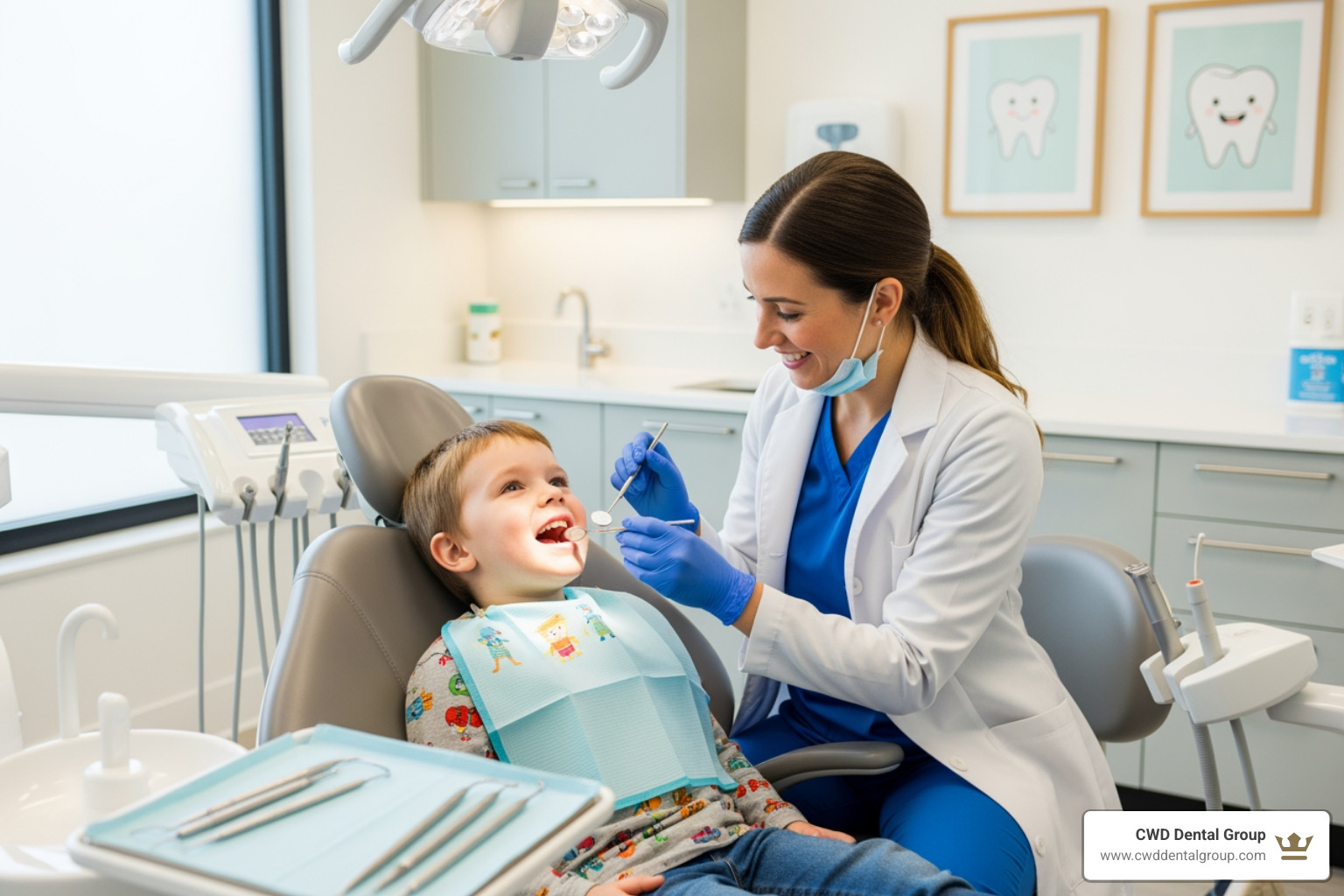
Cavity treatment for kids includes several effective options depending on the severity of tooth decay. Modern dentistry offers more choices than ever, including non-invasive approaches that can stop decay without drilling.
Modern Cavity Treatments for Children:
- Silver Diamine Fluoride (SDF) - A non-invasive liquid that stops decay.
- Dental Fillings - Tooth-colored or amalgam materials for small to moderate cavities.
- Dental Crowns - Caps for extensive decay.
- Pulpotomy (Baby Root Canal) - Removes infected pulp to save a severely decayed tooth.
- Dental Sealants - A protective coating to prevent future cavities.
Tooth decay is the most common chronic childhood disease in the U.S., with nearly 20% of children ages 5-11 having untreated cavities. Cavities form when bacteria feed on sugars, producing acid that erodes tooth enamel. If left untreated, decay can cause pain, infection, and damage to developing permanent teeth.
Even though baby teeth fall out, they require treatment. They are essential for holding space for permanent teeth, proper speech, and chewing. The right treatment depends on the cavity's size, your child's age, and their cooperation level. Early detection is key to simpler, less invasive options.
This guide will walk you through each treatment so you can make informed decisions about your child's oral health.
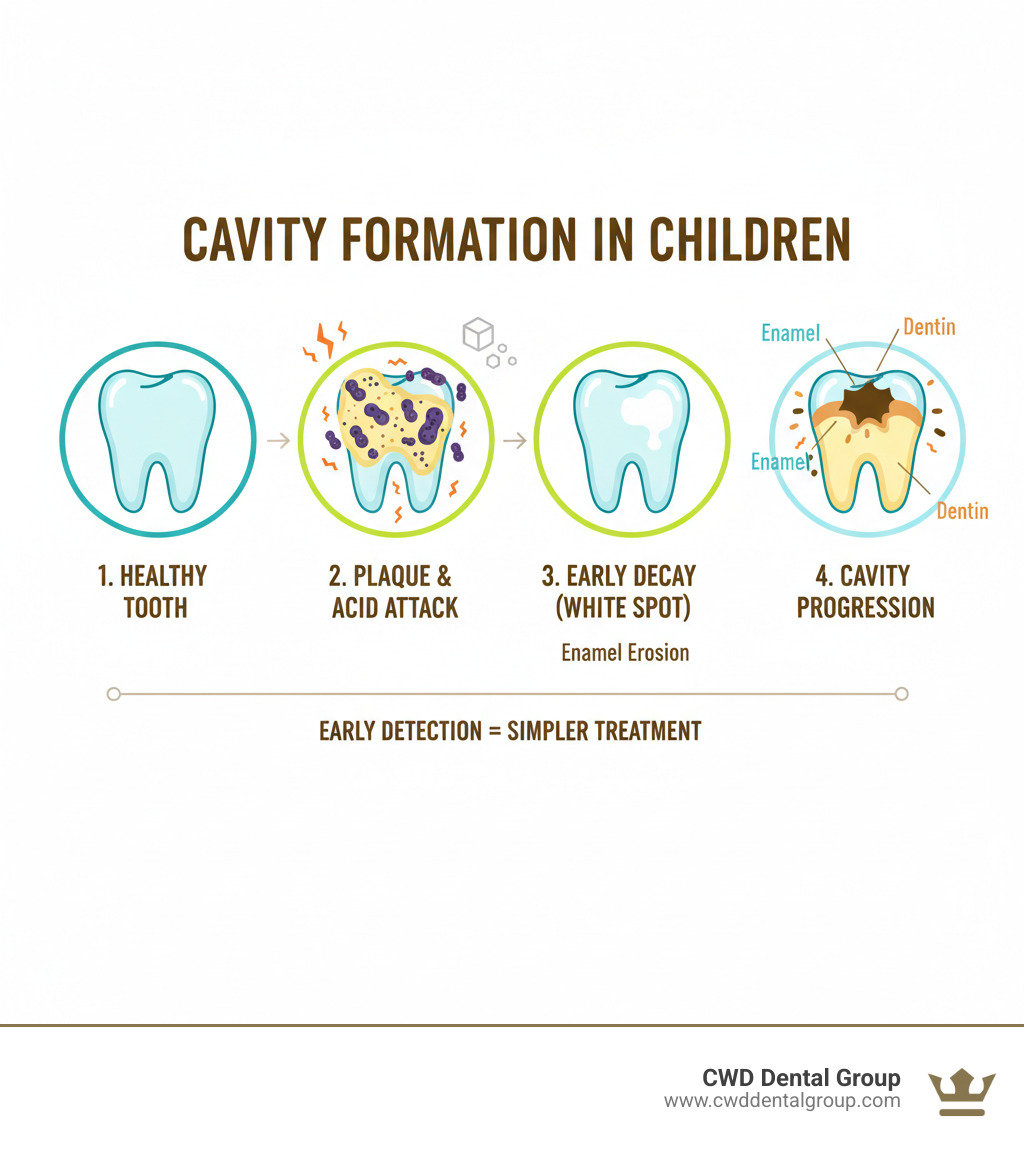
Understanding Tooth Decay: Signs, Symptoms, and Risks
Tooth decay is the most common chronic disease affecting children in America. According to the CDC, 20% of children ages 5-11 have at least one untreated cavity. The good news is that cavity treatment for kids is most effective when problems are caught early. Sometimes, very early decay can be reversed without drilling.
Knowing what to look for is crucial. Regular dental check-ups and your watchful eye at home are the best defense. (If you have questions about appointments, our patient services page has helpful information.)
Signs and Symptoms of Cavities in Children
Cavities don't always hurt initially. By the time pain appears, the decay is often advanced. Here are the signs to watch for:
- White spots: Chalky areas on the teeth, indicating early enamel breakdown. This stage is sometimes reversible.
- Brown or black spots: As decay progresses, the spots darken.
- Visible pits or holes: Openings in the tooth where enamel has worn away.
- Tooth sensitivity: A sharp sensation when eating or drinking hot, cold, or sweet items.
- Pain when chewing: This may indicate the cavity has reached the inner layers of the tooth.
- Persistent bad breath: Can be a sign of bacterial buildup and decay.
- Swollen or tender gums: May signal an infection around a decayed tooth.
Young children may not be able to explain their discomfort, so watch for changes in eating habits, like refusing to chew on one side.
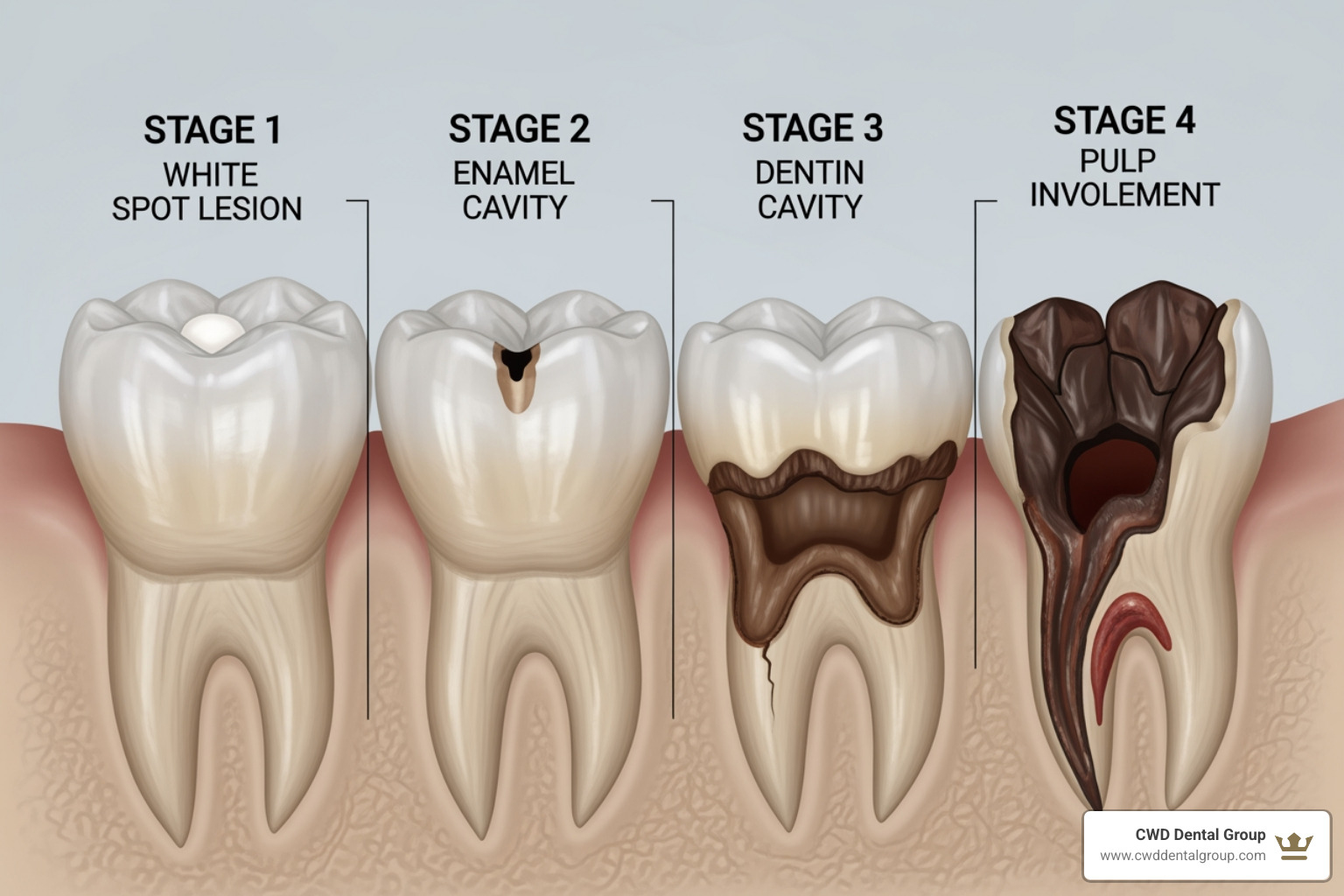
Key Risk Factors for Childhood Cavities
While genetics play a small role, daily habits are the biggest factor in cavity risk.
- Diet and nutrition: Bacteria in the mouth feed on sugars and starches (from candy, cookies, crackers, juice) and produce enamel-attacking acid.
- Sugary drinks: Soda, fruit juice, and sports drinks bathe teeth in sugar. Water is always the best choice.
- Frequent snacking: Constant snacking means teeth are under continuous acid attack, not giving saliva time to repair enamel.
- Poor oral hygiene: Plaque buildup leads to cavities. Children often need help brushing thoroughly for two minutes, twice a day, until about age 8.
- Fluoride deficiency: Fluoride strengthens enamel. Most municipal water in our area (Tallahassee, Havana, Quincy, Crawfordville, Wakulla) is fluoridated, but fluoride toothpaste is also essential.
- Baby bottle tooth decay: This severe decay occurs when babies are put to bed with bottles of milk, formula, or juice, allowing sugar to pool on their teeth for hours.
A Parent's Guide to Cavity Treatment for Kids
When your child has a cavity, we have more gentle and effective options than ever. At CWD Dental Group, we choose the best cavity treatment for kids based on the cavity's size, your child's age, and their ability to cooperate. The goal is always to stop the decay and restore the tooth comfortably.
Here's a comparison of common cavity treatments:
| Treatment Type | Cavity Severity | Procedure Type | Goal |
|---|---|---|---|
| Silver Diamine Fluoride (SDF) | Early to moderate decay, especially in primary teeth | Non-invasive, topical application | Arrest decay progression, kill bacteria, strengthen enamel, delay need for drilling |
| Dental Fillings | Small to moderate cavities | Restorative | Remove decayed tooth structure and replace it with a material to restore tooth function and appearance |
| Dental Crowns | Large cavities, extensive decay, weakened teeth | Restorative, protective | Cover the entire tooth surface to restore shape, strength, and protect from further damage, often for primary teeth with significant decay or after pulpotomy |
| Pulpotomy (Baby Root Canal) | Deep decay reaching the pulp of a primary tooth | Restorative, pulp therapy | Remove infected portion of the pulp, preserve the remaining healthy pulp and tooth structure, prevent extraction, and allow the primary tooth to remain until its natural exfoliation |
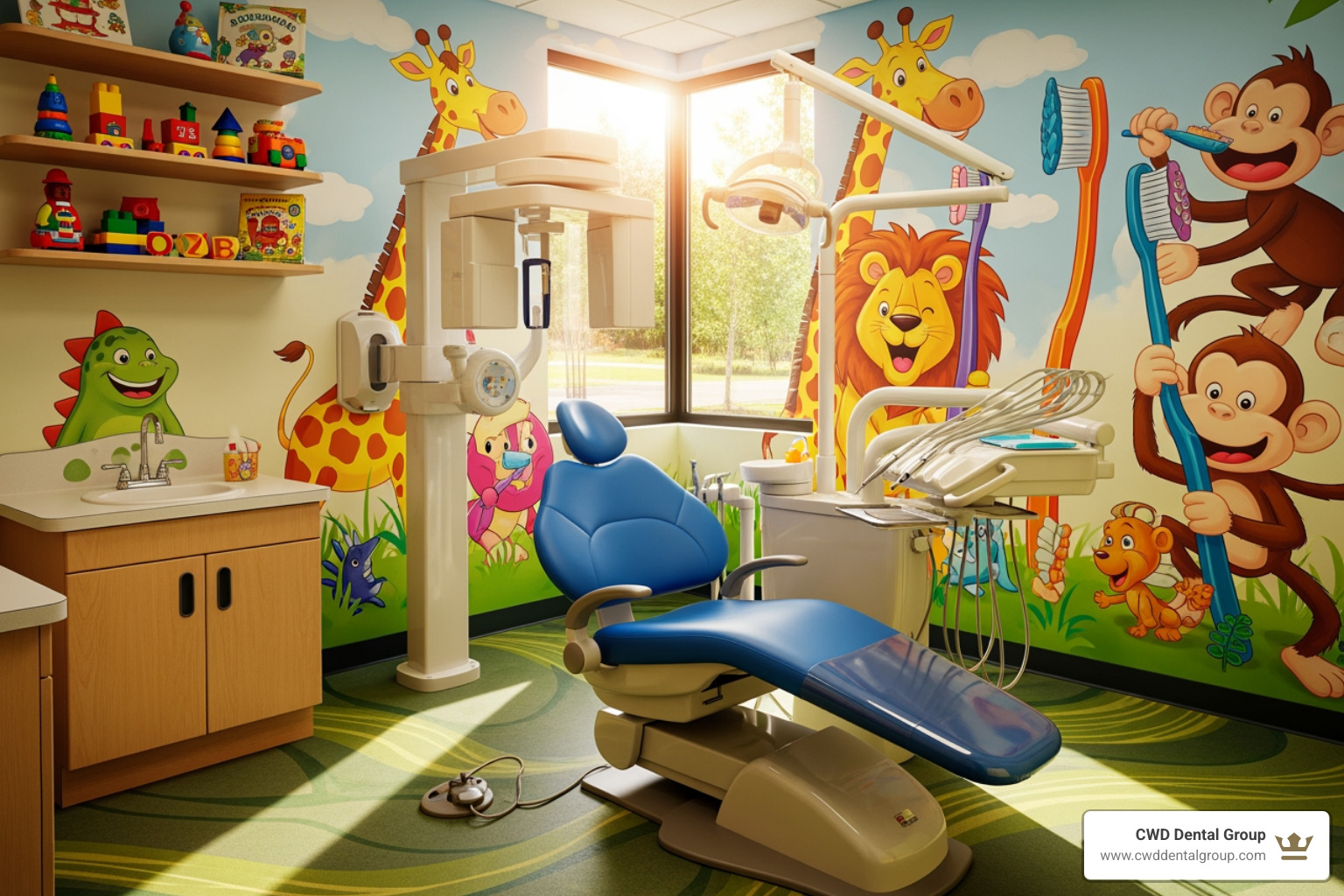
Non-Invasive Options for Cavity Treatment for Kids
When caught early, we can often treat cavities without drilling. Silver Diamine Fluoride (SDF) is a liquid treatment that kills decay-causing bacteria and strengthens the tooth. We simply brush it on—no shots or drilling needed. A major NIH trial found SDF stopped cavity progression in 54% of cases. The main trade-off is that SDF permanently stains the decayed area black, which is often acceptable for back molars. Professional fluoride treatments also strengthen enamel and can reverse the earliest signs of decay.
Restorative Treatments: Dental Fillings
When a cavity has created a hole, a dental filling is needed. The procedure involves removing the decayed material and filling the space to restore the tooth's shape and function.
- Composite fillings are tooth-colored and blend in naturally, making them ideal for visible teeth.
- Amalgam fillings (silver) are extremely durable and cost-effective, making them a reliable option for back molars.
A filling is typically the right solution if decay has broken through the enamel but has not yet reached the tooth's nerve. For more details, visit our page on pediatric dental services.
Advanced Cavity Treatment for Kids: Crowns and Pulpotomies
For extensive decay, more comprehensive treatments are needed to save the tooth.
Dental crowns act like helmets, covering the entire tooth to restore its shape and strength. They are necessary when a cavity is too large for a filling. For baby teeth, durable stainless steel crowns are a common and effective choice for back molars. Tooth-colored options are also available.
A Pulpotomy (Baby Root Canal) is required when decay reaches the tooth's inner pulp (nerve). This procedure removes the infected portion of the pulp to eliminate pain and infection, saving the tooth so it can hold space for the permanent tooth. After a pulpotomy, a crown is placed to protect the weakened tooth.
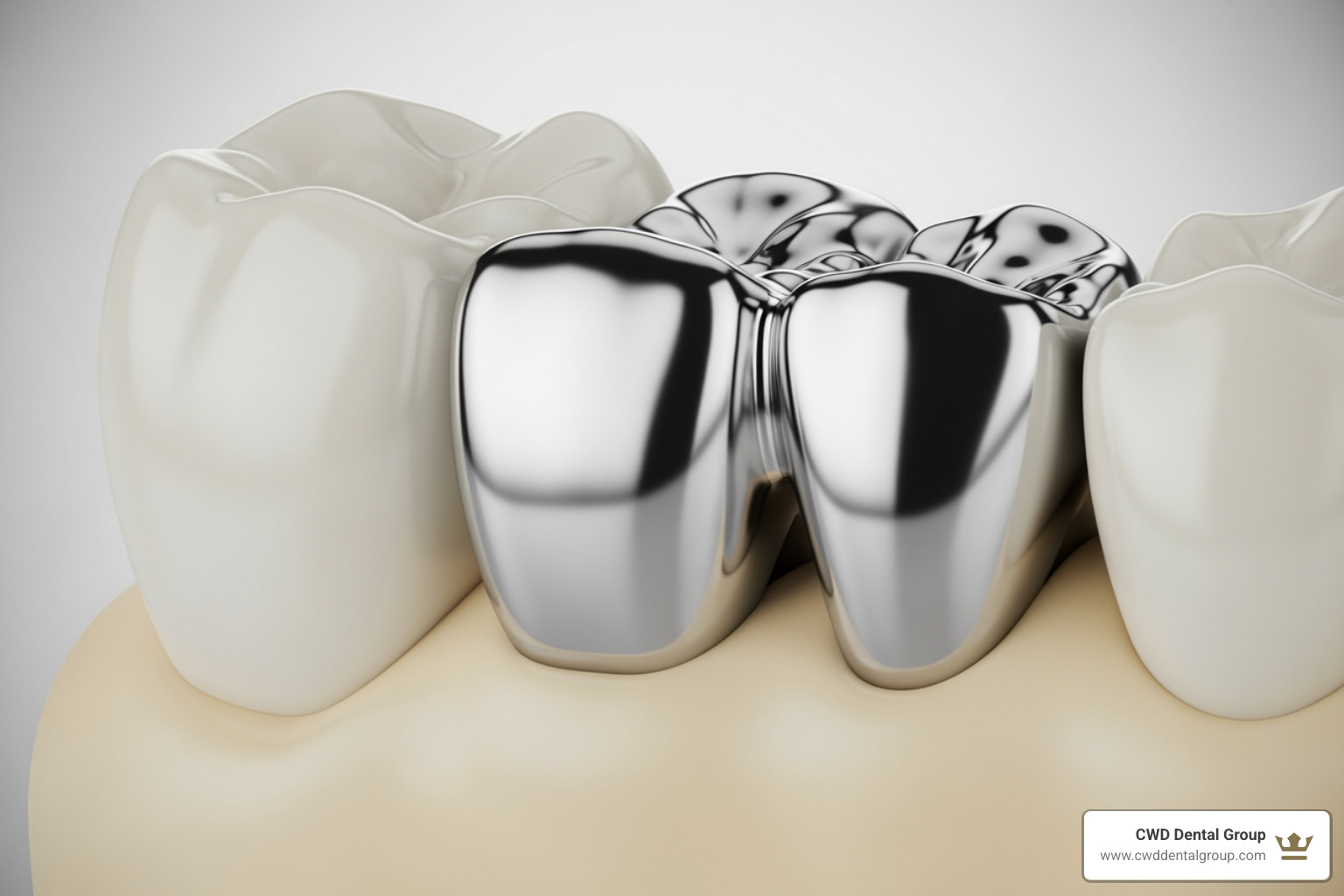
Ensuring Comfort: Sedation Dentistry
Your child's comfort is a top priority. We offer sedation to help anxious children have a positive experience.
- Nitrous oxide (laughing gas) is breathed through a small nose mask. It helps children relax while remaining awake. The effects wear off immediately after the procedure.
- General anesthesia may be recommended for very young children, complex procedures, or high anxiety. Your child sleeps through the entire appointment, monitored by a qualified anesthesiologist.
We always discuss sedation options with you to determine the best approach based on your child's age and cooperation, the procedure complexity, and your family's needs.
The Best Treatment is Prevention
The easiest cavity to treat is the one that never forms. At CWD Dental Group, we are passionate about helping families prevent cavities. The habits you establish at home are your child's best defense against tooth decay. The Cleveland Clinic offers excellent Tips for Preventing Cavities in Children that align with our recommendations.
At-Home Care: Brushing, Flossing, and a Tooth-Friendly Diet
Your home is the first line of defense. Consistent habits are more important than perfection.
- Brushing: Brush twice a day for two minutes with a soft-bristled brush and fluoride toothpaste (a rice-grain smear for kids under 3, a pea-sized amount for ages 3+). Supervise children until about age 8.
- Flossing: Floss daily once two teeth touch. Kid-friendly floss picks can help.
- Diet: Limiting sugar is crucial. The frequency of sugary snacks and drinks matters as much as the amount. Serve treats with meals when saliva production is higher.
- Hydration: Make drinking water the default choice. Our local water in Tallahassee, Havana, Quincy, Crawfordville, and Wakulla is fluoridated, offering extra protection.
- Smart Snacking: Choose tooth-friendly options like cheese, plain yogurt, crunchy vegetables (carrots, celery), fresh fruits (apples, pears), and lean proteins.
Professional Preventive Care
Professional care provides an extra shield of protection.
- Routine Cleanings: Every six months, we remove plaque and tartar and spot problems when they are small and easy to treat.
- Dental Sealants: These thin, protective coatings are painted onto the chewing surfaces of molars to seal out food and bacteria. The application is quick, painless, and can prevent decay for years.
- Professional Fluoride: A concentrated fluoride application during check-ups gives enamel an extra boost to resist acid attacks.
Preventive care is an investment in your child's long-term health, saving them from discomfort and more complex treatments later. Learn more about our approach at More info about our pediatric dentist.
The Long-Term Importance of Treating Baby Teeth
Parents often ask if cavity treatment for kids is truly necessary for baby teeth since they eventually fall out. The answer is a firm yes. Primary teeth play several critical roles in your child's health and development.
Untreated decay in baby teeth has serious consequences. Here’s why treating them is so important:
- They are space holders: Baby teeth reserve the correct spot for permanent teeth. Losing one early can cause crowding and lead to future orthodontic issues.
- They aid speech development: Front teeth are essential for forming sounds correctly. Missing teeth can impact pronunciation.
- They enable proper nutrition: Painful cavities can make it hard for a child to chew, leading to poor nutrition during critical growth years.
- They prevent infection and pain: Untreated cavities can lead to a painful infection or abscess, which can spread and cause serious health issues.
- They protect adult teeth: A severe infection in a baby tooth can damage the permanent tooth developing beneath it.
Promptly treating cavities protects your child's overall health, prevents pain, and supports their proper development.
Frequently Asked Questions about Kids' Cavity Treatments
It's natural to have questions about cavity treatment for kids. Here are answers to the ones we hear most often.
Do cavities in baby teeth really need to be filled?
Yes, absolutely. Untreated cavities in baby teeth can cause significant pain and lead to serious infections (abscesses) that can damage the permanent tooth developing underneath. Baby teeth also act as crucial space holders for adult teeth. Losing them early due to decay can cause alignment problems that may require braces later.
Is cavity treatment painful for children?
We prioritize your child's comfort. Modern pediatric dentistry is designed to be as painless as possible. We use local anesthesia, starting with a topical numbing gel so your child barely feels the injection. For anxious children, we offer sedation options like laughing gas (nitrous oxide) to help them relax. Our team uses gentle techniques and kid-friendly language to create a positive, low-stress experience.
What is Silver Diamine Fluoride (SDF) and does it have side effects?
SDF is a liquid treatment we paint onto a cavity to stop decay. The silver component kills bacteria, and the fluoride strengthens the tooth. The procedure is quick, non-invasive, and requires no drilling or shots.
The main side effect is that SDF permanently stains the decayed part of the tooth black. This indicates the treatment is working. For back teeth, this cosmetic change is usually not a concern. The non-invasive benefit of avoiding a filling is often a worthwhile trade-off, especially for young children or baby teeth that will eventually fall out.
Your Partner in Children's Dental Health
At CWD Dental Group, we are honored to be your partner in protecting your child's precious smile. We've covered modern cavity treatment for kids, from non-invasive SDF to restorative fillings and crowns. Our team will always help you choose the best approach for your child.
However, we want you to remember that prevention is the best treatment. Healthy habits at home—like consistent brushing, limiting sugar, and drinking water—combined with professional cleanings and sealants, give your child the best foundation for a lifetime of healthy teeth.
Our experienced team serves families throughout Tallahassee, Havana, Quincy, Crawfordville, and Wakulla, Florida. We are committed to creating positive dental experiences that help children feel comfortable and confident. We listen to your concerns, answer your questions, and work with you to make the best decisions for your family.
If you've noticed signs of decay or it's time for a check-up, don't wait. Early detection allows for simpler, less invasive treatments. Schedule a visit with our pediatric dentist today, and let's work together to keep your child's smile bright and healthy.
